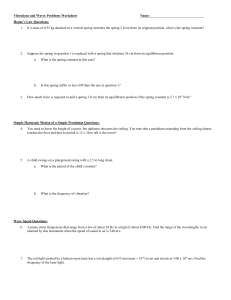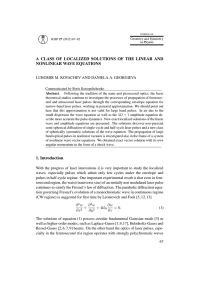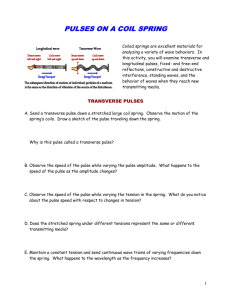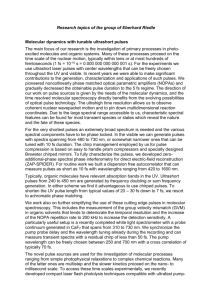Wave Practice Problems with Solutions - High School Physics
advertisement
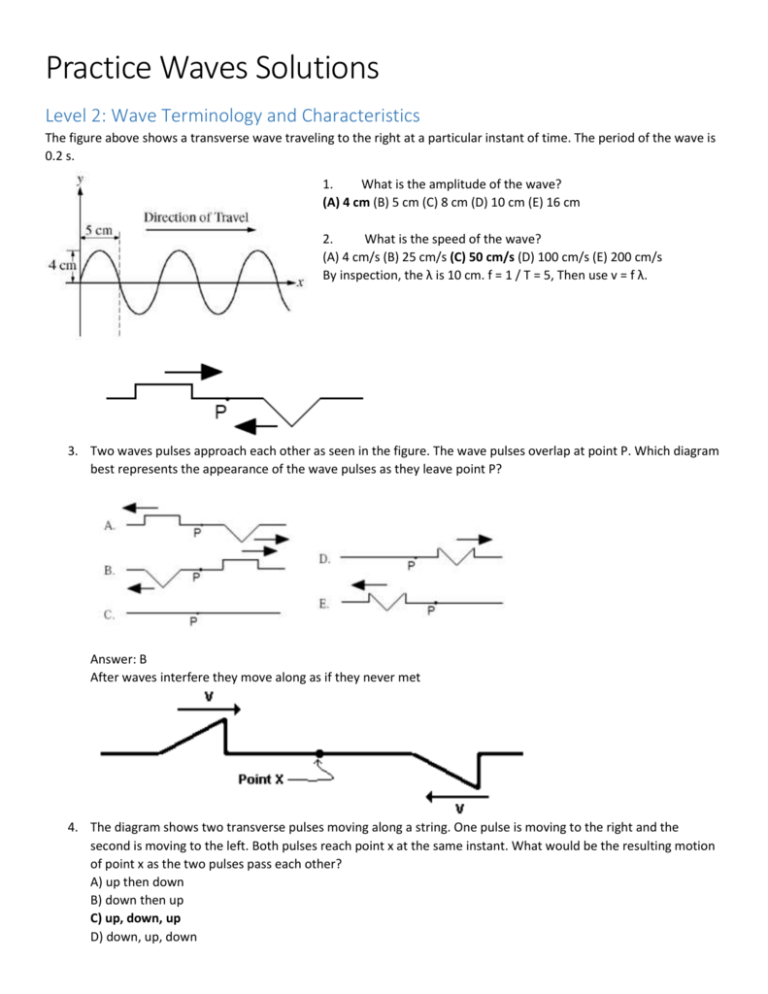
Practice Waves Solutions Level 2: Wave Terminology and Characteristics The figure above shows a transverse wave traveling to the right at a particular instant of time. The period of the wave is 0.2 s. 1. What is the amplitude of the wave? (A) 4 cm (B) 5 cm (C) 8 cm (D) 10 cm (E) 16 cm 2. What is the speed of the wave? (A) 4 cm/s (B) 25 cm/s (C) 50 cm/s (D) 100 cm/s (E) 200 cm/s By inspection, the λ is 10 cm. f = 1 / T = 5, Then use v = f λ. 3. Two waves pulses approach each other as seen in the figure. The wave pulses overlap at point P. Which diagram best represents the appearance of the wave pulses as they leave point P? Answer: B After waves interfere they move along as if they never met 4. The diagram shows two transverse pulses moving along a string. One pulse is moving to the right and the second is moving to the left. Both pulses reach point x at the same instant. What would be the resulting motion of point x as the two pulses pass each other? A) up then down B) down then up C) up, down, up D) down, up, down E) there would be no motion, the pulses cancel one another Step the two pulses through each other a little bit at a time and use superposition to see how the amplitudes add. At first the amplitude jumps up rapidly, then the amplitude moves down as the rightmost negative pulse continues to propagate. At the very end of their passing the amplitude would be all the wave down and then once they pass the point will jump back up to equilibrium 5. The figure above shows two wave pulses that are approaching each other. Which of the following best shows the shape of the resultant pulse when the centers of the pulses, points P and Q coincide? Answer: A 6. A cord of fixed length and uniform density, when held between two fixed points under tension T, vibrates with a fundamental frequency f. If the tension is doubled, the fundamental frequency is Answer: B 7. A standing wave of frequency 5 hertz is set up on a string 2 meters long with nodes at both ends and in the center, as shown above. 8. The speed at which waves propagate on the string is (A) 0.4 m/s (B) 2.5 m/s (C) 5 m/s (D) 10 m/s (E) 20 m/s Based on the diagram, the λ is clearly 2m. Plug into v = f λ. 9. The fundamental frequency of vibration of the string is (A) I Hz (B) 2.5 Hz (C) 5 Hz (D) 7.5 Hz (E) 10 Hz The diagram shows the second harmonic in the string. Since harmonics are multiples, the first harmonic would be half of this.
